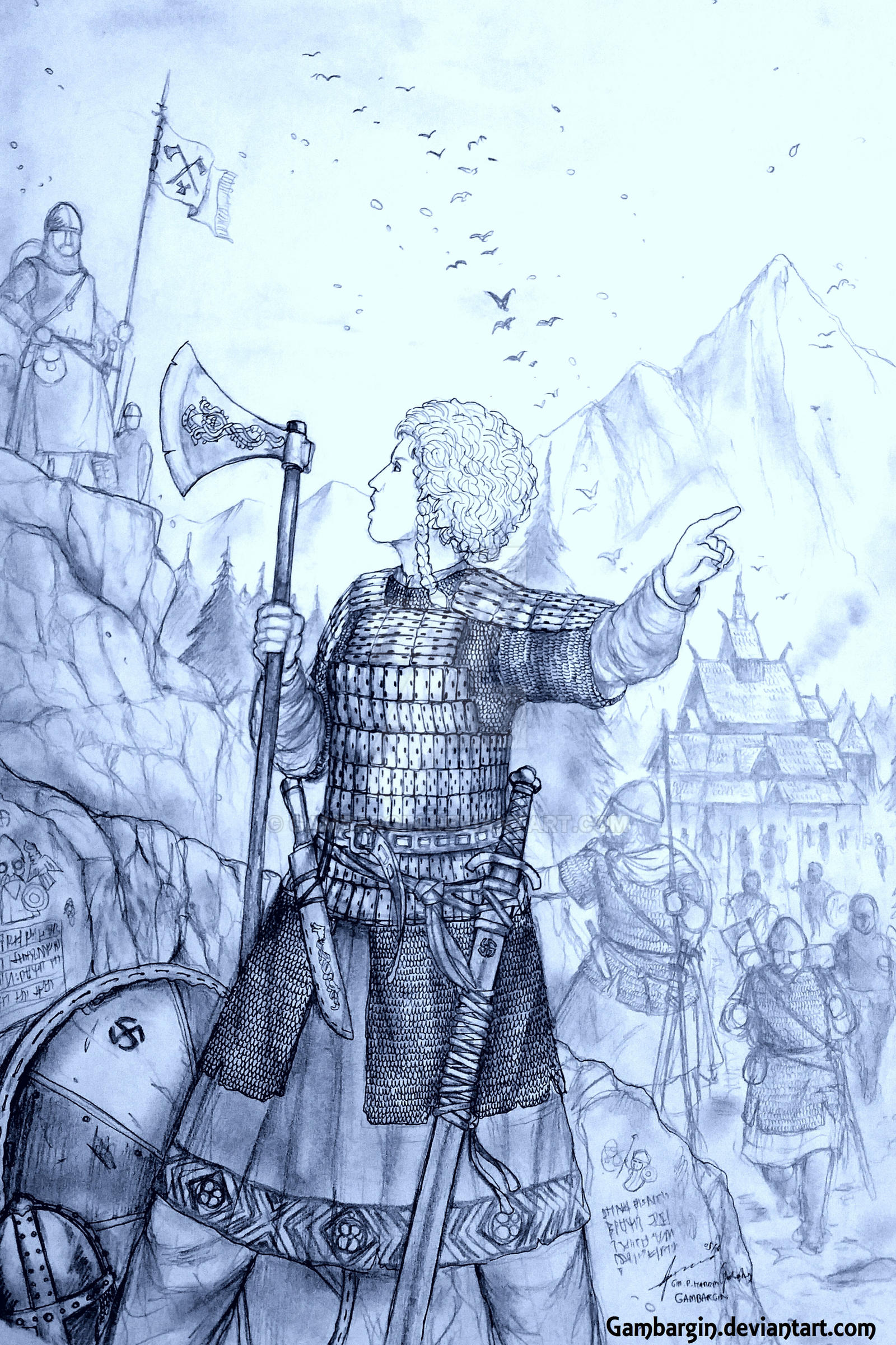Deviation Actions
Description
Inspired by the Music: Helvegen by Wardruna
INTRODUCTION
Norwegian Vikings first raided settlements in Orkney, Hebrides, Shetlands and Isle of Man, but shortly after the Norwegian and Danes settled in the area and established their firm base, before turning their eye towards Ireland. By mid 9th century, the had established trading cities in Eastern Coast of Ireland such as Dublin, Wexford, Cork, Waterford and Limerick. The vikings in Ireland made little attempt to go beyond their raiding and trading activities, probably because the local Irish population were too warlike and hostile, even for the Norsemen taste. They gradually merged with the local population, giving the identity of Gaels or Norse-Gaellic, but the last of the Vikings were defeated by the united Irish army in 1014 under the High King Brian Boru. Apart from Ireland, the Norwegian Vikings had established colonies in Iceland and Newfoundland in Canada, making them one of the earliest European explorer who encountered America long before Columbus in late 15th century. Christianized Norway also shared their forefathers ambition, whose kings tried to claim the throne of England but eventually failed. Historically speaking, In the later stage of medieval era, Kingdom of Norway was in a rather less-than-light position as compared to the glory of their viking forefathers. The death of Haakon V in 1319, left the young Magnus Erikson to rule the throne, proclaimed as Magnus VII of Norway. The popular movement of that time also lead him to be crowned as King of Sweden as well, becoming both King fo Norway and King of Sweden. It was also by this time, that the Hanseatic league was putting more and more pressure onto the Norwegian nobility to give them concessions, which did not go well with Norway. When the Black Death hit the kingdom, the whole economy was devastated and left the Kingdom in a pretty poor state. Regardless, After a few successions and dynastic union, Norway entered into dynastic union with Sweden and Denmark, which resulted in the birth of the Kalmar Union that strengthen the position for the Nordic Countries against the Hanseatic league
DRAWING COMMENTARIES
I must say, this drawing is one of the most rewarding which I have made on Scandinavia over the entire series. It's one of the few where I tried to fill the whole space with detailed backgrounds ![]() . Apart from that, the representation of this Norwegian woman warrior is perhaps one that uses alot of artistic license, though her equipment are historically inspired!
. Apart from that, the representation of this Norwegian woman warrior is perhaps one that uses alot of artistic license, though her equipment are historically inspired!
Here, lady Ragna Erlingsdatter is depicted in a rather heavy combination of armor which saw common use in Scandinavia; the mail have been used since the migration period (perhaps earlier), but the lamellar may have been used since the viking age till the 13th century, or perhaps beyond. The lamellar armor is based on contemporary pictures and re-enactment, though some evidences were unearthed in Valsgärde, Birka and Visby. Her sword is inspired by the 12th century sword found in Korsodsgarden, with decorated pommel and curved hilt. Apart from that, she is equipped with a seax and a rather large two handed axes, inspired by the collections in British museum.
As for the other warriors in the background, the ones standing on the cliff to the left is based on the Baldishol tapestry, which is somewhat similar to the Norman knights from the Bayeux tapestry. On the other hand, the warriors on the right are depicted in the typical 11th-12th century fashion, with mail shirt, reinforced conical helm, spears, seax, and axes. Technically speaking, Norway was the the slowest when it came to adopting western armors (unlike the Danes and Swedes), so its more likely that their equipment were similar to their pagan predecessors.
Developed from the Original Concept: Lady Ragna of Kongeriket Norge (Norwegian)
As well other Scandinavians and Germanic People
The Danes, The Swedish, The Anglo Saxons, and their norse ancestors
:origin()/pre12/63e2/th/pre/i/2016/095/d/7/hertuginde_ingegerd_of_kongeriget_danmark__danish__by_gambargin-d9xtf1i.jpg)
:origin()/pre13/a5a5/th/pre/i/2016/129/2/6/grevinna_ylva_of_konungariket_swerike__swedish__by_gambargin-da1ui2x.jpg)
:origin()/pre14/75d9/th/pre/i/2016/066/b/e/frua_aelfwynn_of_seaxna_rice__anglo_saxons__by_gambargin-d9u8lsk.jpg)
:origin()/pre00/47c2/th/pre/i/2015/302/d/d/gunnhildr_freysdottir_of_vikingrunionen__norse__by_gambargin-d9er4tb.jpg)
A Part of the Historically Wrong Sketch Series: Medieval Revisited - You can find more on the various faction on the map here:
:origin()/pre15/125a/th/pre/f/2015/082/1/4/hws_medieval_revisited___faction_map_v_1_30_by_gambargin-d7jw9k0.png)




































